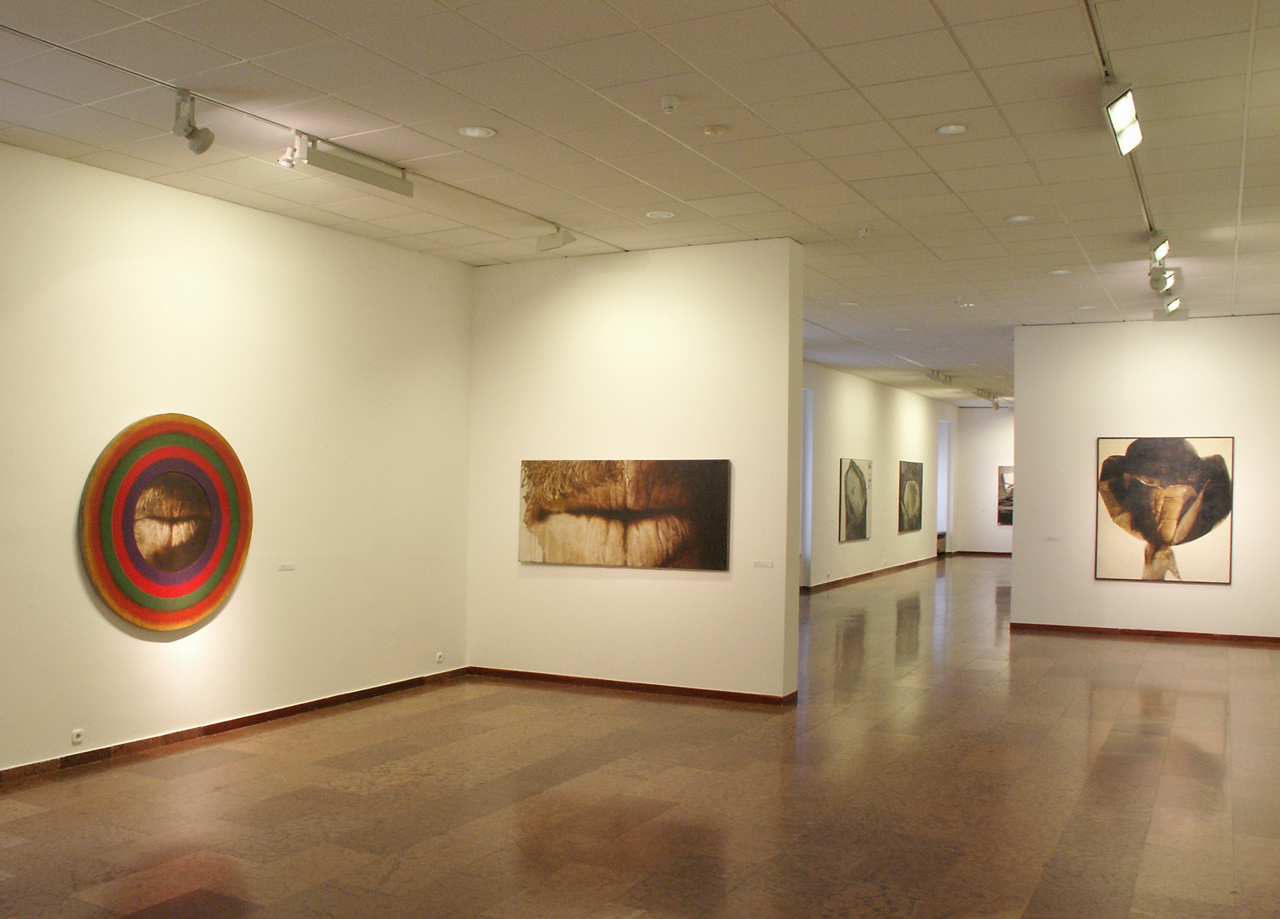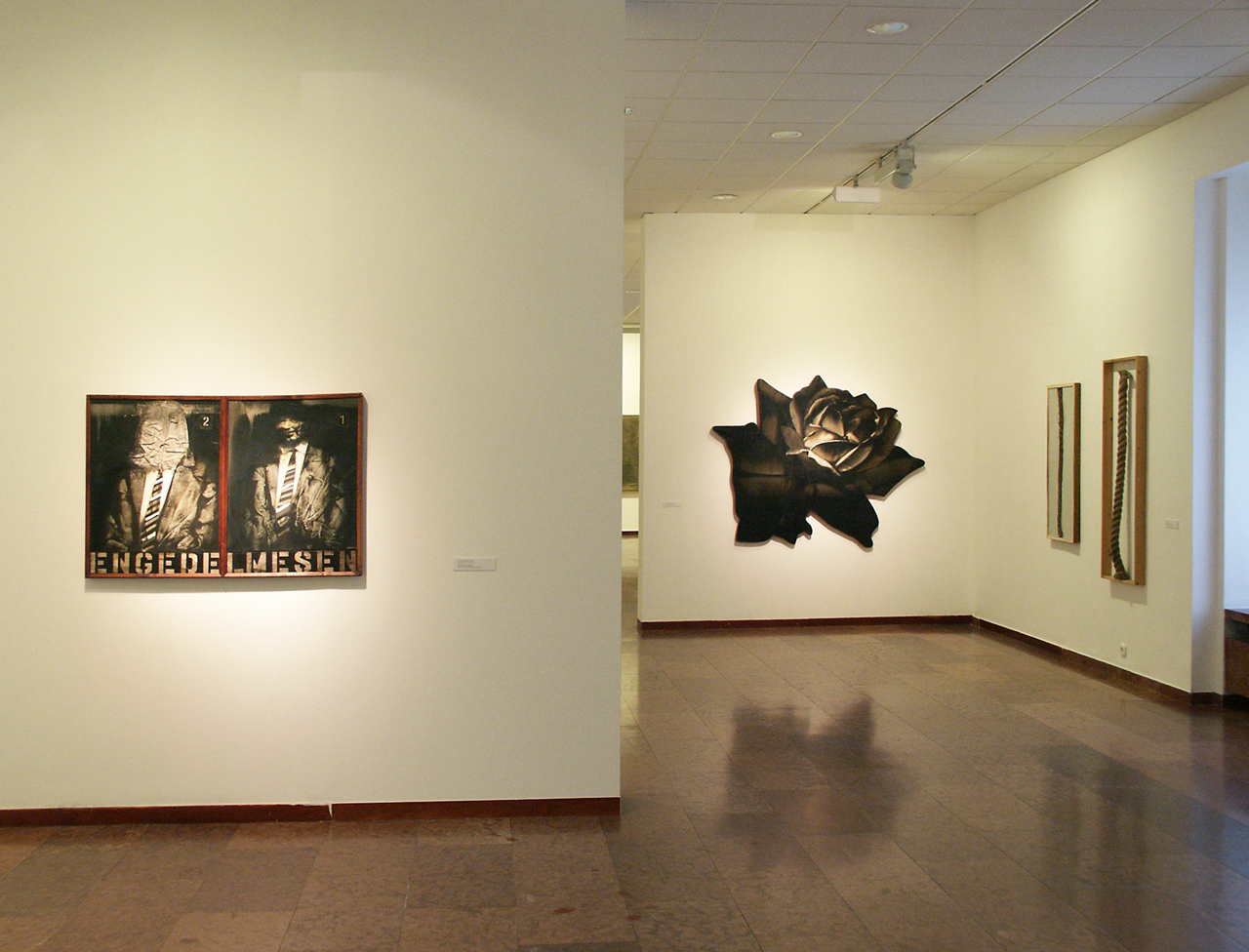For a long time, the Hungarian born (Budapest, 1936) László Lakner’s name – who lived in Germany in the past thirty years - was associated with the emergence of Pop Art in the Hungarian art scene. He became one of the central figures of Hungarian Neo-Avantgarde art, belonging to the so-called Iparterv artists (a group of artists named after a Budapest design firm where their works were unofficially exhibited in 1968-1969).
He studied painting at the Art Academy under Aurél Bernáth, the prominent painter whose students brought about a sort of revolution in Hungarian painting in the 1960’s, working in the spirit of their master’s high professional standards, though not following his style. Lakner also turned to other – old and modern – masters for intellectual guidance, such as Rembrandt, Goya, Ben Sahn, Francis Bacon, Robert Rauschenberg, to name only the most important artists. Actually, Lakner had already applied art historical quotations well before it became a fashionable means of expression in the 1980’s.
From these few clues it may become apparent that it was not so much the popular themes of American art that Lakner’s early works focussed on through their Pop-like topics, but rather on the social-political issues.
This retrospective exhibition can reveals, that Lakner was active in a perplexing variety of art forms. Simultaneous with his early paintings, he created conceptual artworks, objects, sculptures, even took photographs, made book illustrations, prints and posters, and directed experimental films.
In a sense, his paintings also took on a documentary direction in the 1970’s; he concerned himself with depicting post cards, identity cards, receipts, museological descriptions of artworks and film frames, and through the use of photography, enlarged them into paintings of a somewhat distancing effect. He presented these works at his first German exhibition in Ludwig Museum, Aachen, under the title Gesammelte Dokumente.
His early works comprised the essentials of all that would become significant to him later: the symbiosis of painting and books, of either poetry or philosophy – or rather a symbiosis of sensually painted Informal surfaces and letters. The emotional charge springing from the two, with the intellectual discipline contradicting the emotional foundations, yielded the most important artistic question for Lakner in his paintings during the 1980’s and 1990’s. For Lakner, the written word with its objective manifestation, the book, possesses a magical power. He is not content with painting books on canvases, but has created a number of book objects, even a book tower and a book axe cast in bronze (the latter ironically referring to a stone-axe, which most closely resembles African tribal symbols).
Lakner’s approach to writing is quintessential; he uses famous people’s signatures, words or fragments from their poems. In the early 1980’s, during his stay in New York he started with his Isa pur paintings using the archaic words from the first complete Hungarian text known to us, the Halotti beszéd (Funeral Sermon). Closely related to these works are his Celanesque paintings, with the first line of the Death Fugue (“Schwarze Milch”) being painted in numerous variations.
Lakner’s works created in Germany are not only centred on issues of form, but around a highly important philosophical problem, namely the identity of art. Similarly to others living in two different cultures, he continuously poses questions about the identity of painting, the identity of his chosen role models, and last but not least, his personal identity.
The exhibition material is a selection of works from the studio of the artist as well as on loan from sixteen Hungarian and eighteen German public and private collections, almost unknown to the Hungarian public.
On the occasion of the exhibition the museum publishes a bilingual book on Lakner’s oeuvre.









